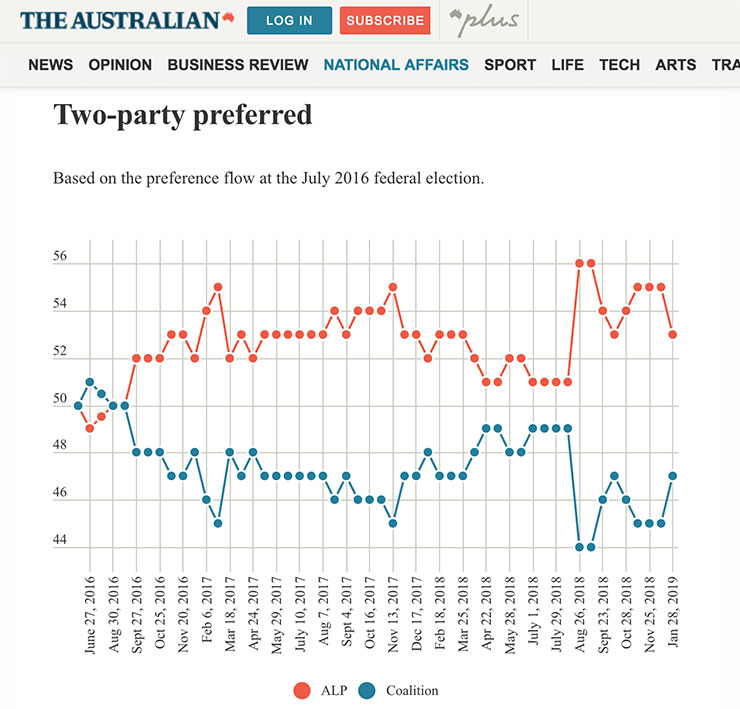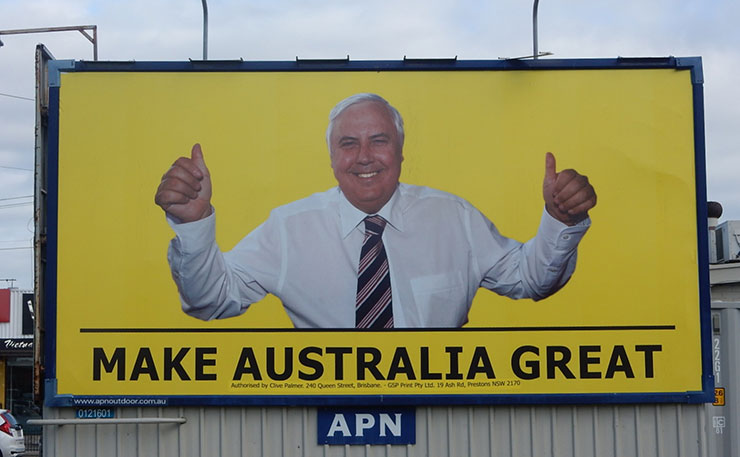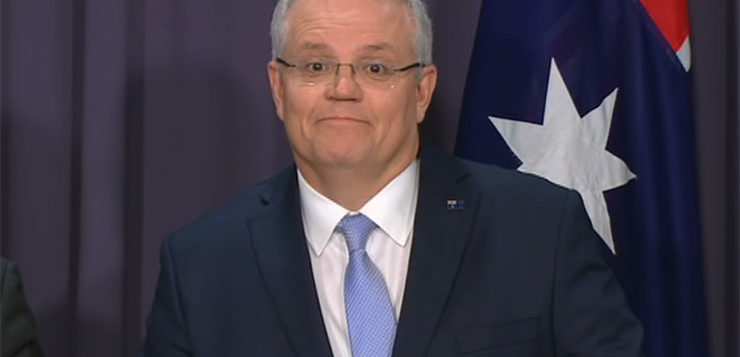One the upsides of the festive season is a break from the incessant noise of political polls. But, with February drawing near, and an election predicted for May, we’re back in the full swing of the electoral cycle … and the dreaded polls have returned. Chris Graham weighs in.
The Australian is reporting this morning that the latest Newspoll, released overnight, shows a “lifeline” for Prime Minister Scott Morrison’s government, with a “bounce” in the polls – a lift of two points on a two-party preferred basis (Labor on 53, the Coalition on 47).
Some of this is true, some of it is not.
The Newspoll does reflect a slight lift for the Coalition, but what The Australian doesn’t tell you (and strangely, neither does the Newspoll data) is how many people were surveyed. It’s a crucial figure, because the sample size of the poll determines its margin of error… namely, how accurate it is, and whether or not a two-point lift actually means anything.
In the absence of the polling size, we know that generally, Newspoll surveys less than 2,000 people. This gives a margin of error of between two and three percent. Assuming the sample size is standard for Newspoll, then the two point ‘bounce’ in the survey is meaningless, because it’s within the margin of error and could simply be statistical noise in the survey.
This story explains the theory of polls, and the margins of error, and what happens when you ignore them.
That’s not to say the Newspoll is useless – they’re generally reasonably accurate, but their best use is to determine trends over time. And on that front, the Coalition remains in serious trouble.
The closest the Coalition has gotten to Labor was 49-51 in August last year, just before the Peter Dutton-led execution of Malcolm Turnbull. Since then, polling with Scott Morrison as leader has been consistently poor, albeit showing a very slight upwards trend within the margin of error.

Morrison’s worst two-party preferred results were immediately after he took office, scoring 44 (to Labor’s 56) in August and September. Since then, his best results were in October and again in January, at 47. But again, these results appear to be within the margin of error. So we need a longer period of time to measure his performance.
On primary votes, Labor are neck and neck with the Coalition, as they have been for much of the past two and a half years (Labor 39, Coalition 38).
The Greens continue to hold fast with 9 per cent of the primary vote – within a point or two of where they’ve been polling for several years.
On the far right of politics, One Nation’s fortunes continue to sink. They’re currently polling at 6 per cent of the primary vote. A year ago, they were at 5 per cent.
In other news, Clive Palmer’s bid for a re-entry to federal politics appears to have gotten off to a less than auspicious start. After spending (reportedly) millions on texting random people about the United Australia Party (formerly the Palmer United Party), polling shows it’s had little effect.

Palmer is standing for the marginal seat of Herbert in Townsville, currently held by Cathy O’Toole with a margin of 0.02%, making it one of the most marginal seats in the nation.
Newspolll data shows he’s polling around 8 per cent. That IS significant because no matter how many polls you do, eight percent is still eight percent, and a long way short of what’s needed to get elected.
As the owner of Queensland Nickel, Palmer was once one of Townville’s larger employers. That business went belly-up in 2016, owing hundreds of millions of dollars.
Palmer has promised to re-open the refinery, although he’s currently locked in a legal battle with the administrators of his failed company.
Don’t miss the news – Click here to get our free email digest direct to your inbox.
Donate To New Matilda
New Matilda is a small, independent media outlet. We survive through reader contributions, and never losing a lawsuit. If you got something from this article, giving something back helps us to continue speaking truth to power. Every little bit counts.




